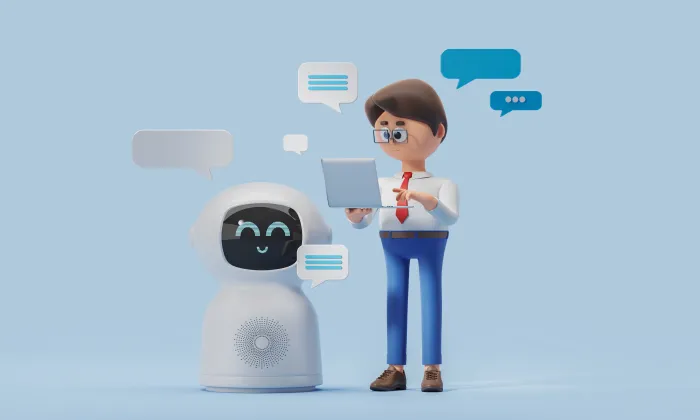Can I define the script for voice cloning data collection?
Voice Cloning
Data Collection
Speech AI
Defining a script for voice cloning data collection is a crucial step in producing high-quality datasets that train voice synthesis systems effectively. A well-crafted script captures the nuances of speech, ensuring the collection of audio data essential for creating synthetic voices that are both natural and expressive. Here's how to approach script definition with precision and purpose, aligning with the needs of various applications.
Why Script Definition is Crucial
Script definition is more than just writing down words for speakers to read. It is about ensuring quality, consistency, and diversity in the collected audio data:
- Quality and Consistency: A structured script guarantees uniformity, helping to train robust voice models that sound natural. Consistent phrasing and tone across recordings ensure authenticity.
- Diversity of Expression: Including a range of emotions, accents, and speaking styles enriches the dataset. This diversity allows the synthesized voice to perform well across different contexts and applications, from gaming to educational tools.
- Audience Alignment: Understanding the target application is key. A script for children's audiobooks will differ significantly from one for corporate training videos, requiring different tones and styles.
Key Components of a Voice Cloning Script
To craft an effective script, consider the following elements:
1. Content Variety
- Narrative Elements: Incorporate dialogues, monologues, and descriptive passages to capture a wide array of speaking scenarios. This helps mimic real-world interactions and storytelling.
- Emotional Range: Include expressions that evoke various emotions, from joy to sadness, ensuring the voice model can replicate a broad emotional spectrum.
2. Phonetic Coverage
- Vowel and Consonant Diversity: Ensure the script covers a wide range of phonemes to support different dialects and accents, crucial for multilingual applications.
- Intonation and Stress Variability: Use sentences with varying stress patterns and intonations to capture the natural rhythm of speech.
3. Length and Complexity
- Sentence Length: Vary sentence lengths to reflect natural speech patterns. Short sentences convey urgency, while longer ones are better for narratives.
- Lexical Diversity: Employ diverse vocabulary to ensure the model can handle a wide range of words in real applications.
Best Practices in Script Development
Developing a script for voice cloning involves several practical steps:
- Collaboration with Linguists: Engaging linguistic experts ensures scripts are phonetically rich and culturally relevant, aligning with natural speech patterns.
- Iterative Testing: Conduct pilot recordings and gather feedback to refine the script, addressing any deficiencies before finalization.
- Compliance and Ethics: Ensure all scripts and recordings comply with legal standards, especially regarding consent and the ethical use of voice data. FutureBeeAI emphasizes scripts that prioritize legality and ethical standards, reflecting industry best practices.
Avoiding Common Mistakes in Script Definition
Here are some pitfalls to avoid when creating scripts:
- Neglecting Speaker Diversity: Ensure scripts accommodate various accents and demographics to enhance the dataset's robustness.
- Overly Complex Scripts: Balance complexity to capture necessary diversity without causing confusion during recording.
Real-World Impact
The effectiveness of a voice cloning script is evident in various applications. For instance, in gaming, scripts must capture dynamic and expressive speech to enhance player immersion. In educational settings, clarity and emotional engagement are crucial for effective communication. Tailoring scripts to these needs ensures the resulting synthetic voices meet specific user demands.
By focusing on these aspects, teams can develop scripts that yield high-quality voice data, paving the way for more effective and realistic voice cloning models. This thoughtful approach not only enhances the training data pipeline but also ensures that synthetic voices resonate with their intended audiences. For AI projects requiring precise and versatile voice cloning datasets, FutureBeeAI offers expertise in AI data collection, ensuring compliance and quality at every step. Additionally, their speech data collection services provide structured gathering of diverse voice data, essential for creating comprehensive text-to-speech datasets.
Smart FAQs
Q. What equipment is best for recording voice cloning data?
A. Use professional-grade equipment and studio environments to ensure high-quality recordings, preventing artifacts that can degrade voice clone quality.
Q. How can emotional diversity be ensured in voice cloning?
A. Include script contexts that prompt different emotional responses, such as storytelling, persuasive speech, and conversational dialogues, to capture a wide tonal range.
What Else Do People Ask?
Related AI Articles
Browse Matching Datasets
Acquiring high-quality AI datasets has never been easier!!!
Get in touch with our AI data expert now!








